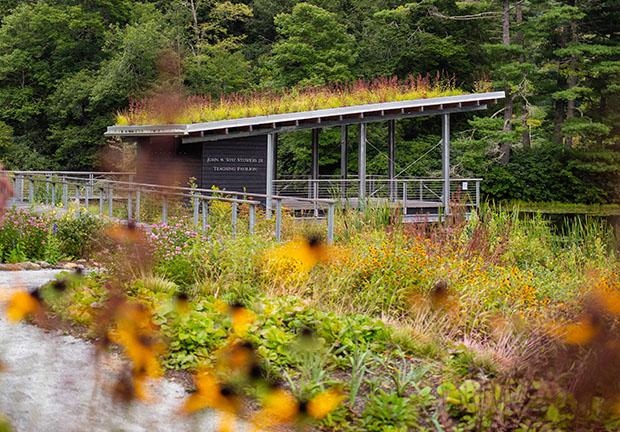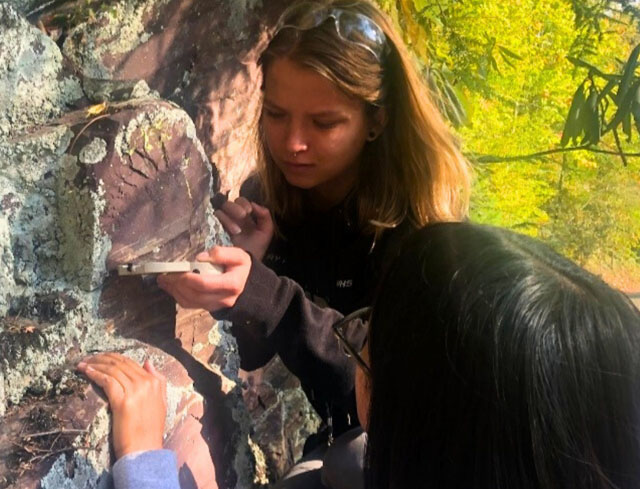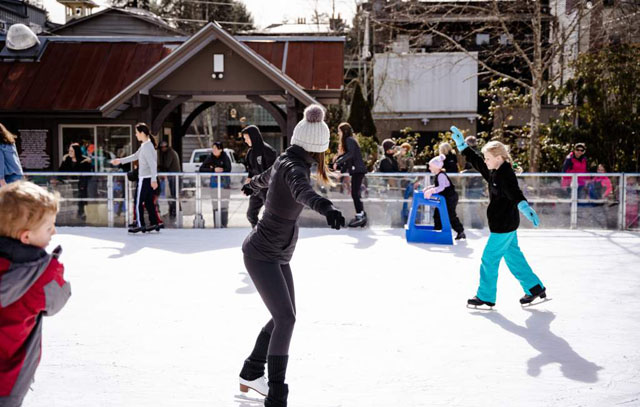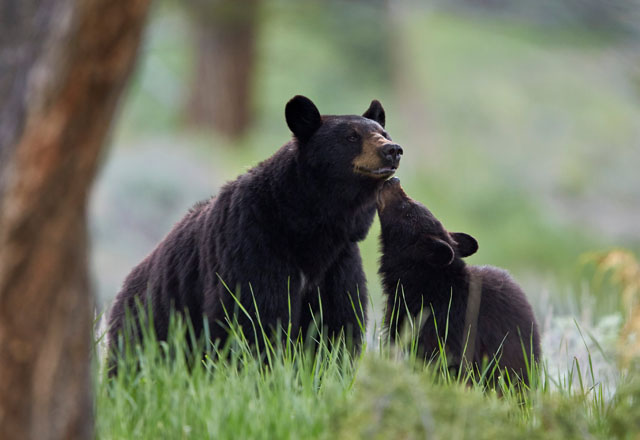This Land Is Your Land; This Land Is My Land
04 Oct 2021
Friends of Panthertown joins forces with local and national organizations to conserve and protect Panthertown Valley
by Christa Miller
Photos by Thomas Mabry
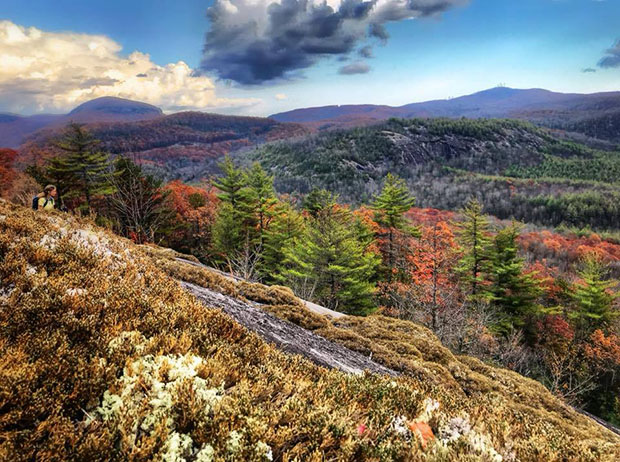
It's been a long week. Your body is wound tight after hours of conference calls and rush-hour traffic; you can't take the thought of yet one more project, and the news steadily streams negativity.
A day hike at Panthertown Valley seems like just the thing. Before long, you're on a pristine western North Carolina pathway, wending your way between trees, around boulders, up and down hills. As your mind and body focus on balance, pacing and your breath, you finally start to unwind.
By the time your hike is done, you feel so refreshed that you just have to share your experience. You give the trail five stars on all your favorite review apps, adding the selfie you took at the trailhead. And when you return, you vow, it'll be for an overnight.
Except that a few weekends later, trying to make plans, you learn that others have the same idea, and dispersed backcountry camping can be challenging. Some areas could be inaccessible because the trails leading to them have been washed out by rain or blocked by fallen trees. You know that means the other trails will be more crowded. Disheartened, you wonder: "what can be done?"
Conserving a local treasure
A trail system as extensive as Panthertown Valley's —30 miles' worth—takes a lot of time and effort to maintain. Diverting water off a trail, clearing trees and cutting back brush, and sometimes even relocating a section of trail all take careful planning and regular maintenance.
And while factors like storm damage are normal and expected, says Jason Kimenker, executive director of the nonprofit Friends of Panthertown—climate change notwithstanding—human activity can compound the impact to the trails and their surrounding environment, which includes the headwaters of the Tuckasegee River and a rare high elevation mountain bog. Some plant species are native only to Panthertown Valley.
"We're not going to stop the valley from changing due to natural events, but we need to assess what impact that has on the recreation trails and use in the valley," adds Maggie Carton, president and chair of the Friends of Panthertown board of trustees.
Whether this means closing a trail for a few weeks to let it dry out, or rerouting it altogether in the long term, is driven by a volunteer service agreement with the U.S. Forest Service.
The Forest Service focuses on wildfire suppression and prevention, invasive species control and overall forest management; Friends volunteers work to maintain the trails and fund their efforts—a model that Kimenker says is replicated on public lands nationwide.
The service agreement is part of the Forest Service's 15-year forest management plan for the broader Nantahala and Pisgah National Forests. Covering not just recreation, but also timber sales, prescribed burning and other management tools and techniques, the plan is in the process of being updated from the previous, 20-year-old plan.
That's especially important as new visitor groups, like anglers and rock climbers, come to the valley from around the Southeast—not just western North Carolina—and as Panthertown Valley seeks to maintain its backcountry designation.
"We're not looking for a lot of development," says Carton. "We want it to be simple and rustic that relates to this very natural area that we're conserving."
To that end, the Forest Service provides background information and limited equipment and training resources for the volunteers. But the Friends of Panthertown are responsible for finding the volunteers in the first place, delivering the training and most of the tools and funding the efforts. That's where partnerships with other community groups become mission-critical.
Drawing on the support of the business community
Kimenker, a lifelong outdoors enthusiast with roots in New England, and Carton, a longtime resident of Atlanta, GA, have both been in the Cashiers, NC, area for about 20 years and involved with Friends of Panthertown for roughly half that time.
Their recent participation in the local Chamber of Commerce's Leadership Cashiers—Carton in the inaugural group in 2019, and Kimenker last year—provided what Carton calls "more outlets for information that informs our strategic planning," including connections to groups that can inform the nonprofit's development of a five-year strategic plan.
"That's when the real magic begins," says Kimenker, "because now we start collaborating with each other to develop benefits for the Cashiers area that maybe wouldn't have happened before."
Part of that, says Carton, is working with the Cashiers Area Chamber of Commerce and the Jackson County Tourism Development Authority to encourage visitors to recreate responsibly and abide by the Leave No Trace principles (see sidebar). Another part is data collection "to understand more where people are going," Carton explains. Traffic counters set up on busy holiday weekends, for one, and a survey, for another, will help.
The data will be used together with feedback from community leaders on how they envision Panthertown in five years, especially how they anticipate higher visitor numbers to affect trail system usage—as well as whether the Friends are focusing in the right areas.
A shift to stewardship from membership opens doors
It's the kind of feedback that led Friends of Panthertown to shift from a membership-oriented funding strategy to a stewardship-oriented one. Because Friends isn't an arts-oriented nonprofit, says Carton, it can't offer comparable membership benefits. "We can't offer you special parking in the parking lot, or a discount on a performance," she explains.
Besides, volunteers are equally important. So, Carton says, shifting focus to natural resources stewardship is a more inclusive way of allowing residents and visitors alike "to be a friend of Panthertown in whatever way that means for you."
"For some people, it's being a volunteer on the trails," she continues. "For some people, it's writing a check once, and for others, it's writing a check every year. Everybody is a friend, whether you give us money or you put on a hard hat and do chainsaw work for us."
This strategy also supports Friends of Panthertown's efforts to diversify and include underserved, underrepresented populations. Groups like the local Boys and Girls Club and Big Brothers, Big Sisters, as well as educational institutions, work with the Friends to deliver outdoor education.
The stewardship fund further offers more flexibility to the organization's maintenance and public education work. Rather than process membership renewals at the end of each year, says Kimenker, the annual fund will allow for funds to be available sooner—in spring and summer, just as the valley's busy season begins.
That flexibility will be integral to bigger projects that could require machine work rather than conventional hand tools. One such project-converting the water bars that divert stormwater off the trail to rolling grade dips that are more efficient, safer for mountain bikers to navigate and easier to maintain over the long term.
It's the kind of effort, says Kimenker, that will meet demand as outdoor recreation has become one of the leading economic drivers across the entire country—and as the valley continues to change. Ironically, just as human activity can harm the natural environment, it's the only way to continue to protect it.
"This is your public land," Kimenker says. "It's yours to come and visit, and it's yours to come and protect also." To learn more about how to get involved doing that, visit www.panthertown.org.
Wanted: Friends of Panthertown Volunteers
No experience needed; all ages and skill sets welcome (business and school groups too!)
Board and committee work
Community outreach
Light or heavy maintenance
Workshopping
Trail ambassadorship
Donations: equipment, refreshments
Learn first aid, trail design and construction, chainsaw technique and more
Must enjoy hiking and the satisfaction of a day's hard work
Training, tools and personal protective equipment provided (ask about the Green Helmet Award!)
Scholarships available for four-day courses
Have fun!
The 7 Leave No Trace Principles of Good Stewardship
In September, the national Leave No Trace Hot Spot program sent a small team of educators to Panthertown Valley to conduct a four-day series of trainings, workshops and service projects to improve visitors' recreational experience. The fruits of this program will be harvested for years to come. In the meantime, if you're visiting Panthertown Valley, a few pointers:
1. Plan ahead and prepare.
Before your visit: Visit panthertown.org for the most up-to-date notices and advisories, as well as its visitors' guide.
When you arrive: Read the public notices on the kiosk bulletin board and/or visit the information booth. Make sure you have a map and, preferably, a compass or GPS—and that you're prepared for any kind of emergency, from extreme weather to bee stings and snake bites.
If you're not prepared for a primitive experience, consider nearby sites like DuPont State Forest or Whiteside Mountain.
2. Travel and camp on durable surfaces.
Stick to Panthertown Valley's official, maintained trails—not footpaths, and no shortcuts of your own, especially if you're not familiar with the area. Not only can you get lost, but you can also inadvertently damage fragile ecosystems.
Be mindful of the trailhead signs that designate hiking, mountain biking or equestrian usage. Park, camp and latrine at least 200 feet from lakes and streams, and stick to existing campsites rather than making your own.
3. Dispose of waste properly.
Most of Panthertown Valley's visitors are great about cleaning up and packing out their own trash, says Carton, but Leave No Trace is about much more than that. Because the valley has no toilet facilities, visitors should know how to dig, use and cover over catholes. Know where—and where not—to go. (Hint: don't go in lakes and rivers, and don't wash dishes there, either. Carry water you need at least 200 feet away.)
4. Leave what you find.
Leave rocks, plants and other natural objects, as well as any historical manmade structures, as you find them. Don't pick flowers, especially if they're unusual, and don't stack rocks. Rock cairns look cool but selecting the river rocks can disturb aquatic creatures that live underneath them.
5. Minimize campfire impacts.
Arson, not a campfire, started the 2016 wildfires that burned 46,000 acres in the Nantahala National Forest—but the lesson stands. To minimize the risk of fire as well as the impact to the area, pack a lightweight camp stove for cooking and candle lanterns for light. If you must use firewood, use dead wood that you find at or near your campsite rather than bringing outside wood (which could contain pests) in.
6. Respect wildlife.
Panthertown Valley is a bear sanctuary. Store your food and other scented items properly in bear canisters and keep your campsite tidy, and make sure to secure your tent. Definitely don't feed (or take selfies with) the bears or other wildlife!
If you're hiking instead of camping, bring a bear bell or a group. The noise will discourage bears from approaching, though in the interests of preserving the experience for others, don't drown out nature's sounds.
7. Be considerate of other visitors.
Whether hiking or riding (bikes or horses), be mindful that you're sharing the trail with others. And if you're camping, do so on sites away from trails or other campers.
Go ahead and post the waterfall selfie—but encourage your friends and followers to become stewards, too!

